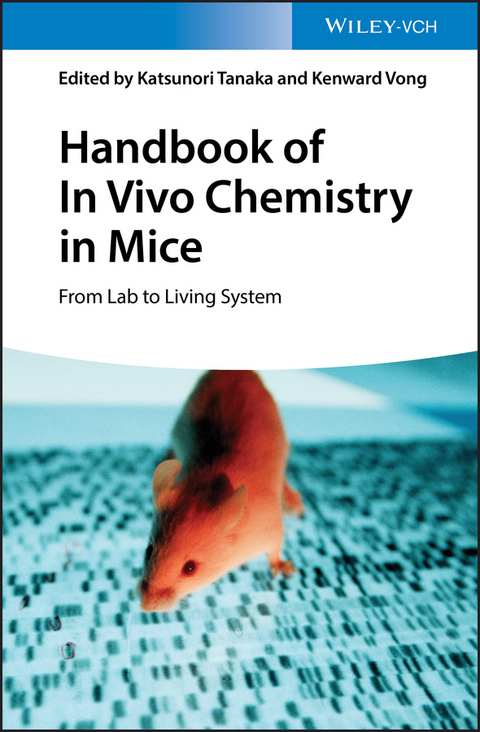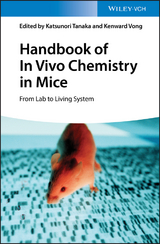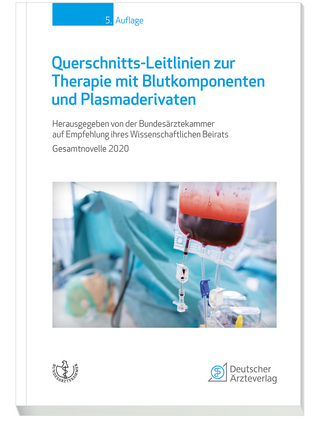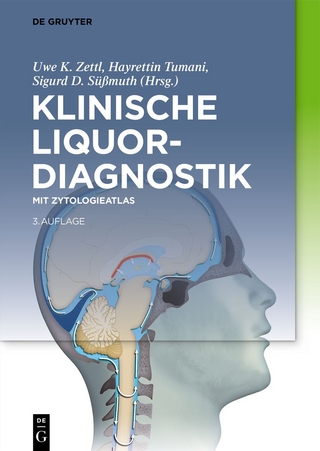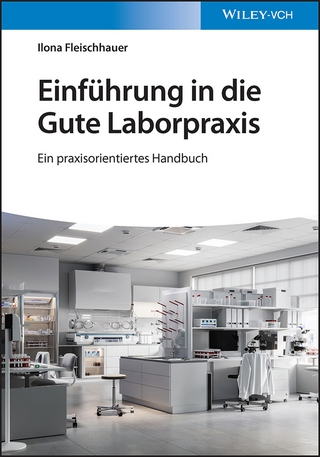Handbook of In Vivo Chemistry in Mice
- Titel ist leider vergriffen;
keine Neuauflage - Artikel merken
This handbook summarizes the interdisciplinary expertise of both chemists and biologists performing in vivo chemical reactions within live animals. By comparing and contrasting currently available chemical and biological techniques, it serves not just as a collection of the pioneering work done in animal-based studies, but also as a technical guide to help readers decide which tools are suitable and best for their experimental needs.
The Handbook of In Vivo Chemistry in Mice: From Lab to Living System introduces readers to general information about live animal experiments and detection methods commonly used for these animal models. It focuses on chemistry-based techniques to develop selective in vivo targeting methodologies, as well as strategies for in vivo chemistry and drug release. Topics include: currently available mouse models; biocompatible fluorophores; radionuclides for radiodiagnosis/radiotherapy; live animal imaging techniques such as positron emission tomography (PET) imaging; magnetic resonance imaging (MRI); ultrasound imaging; hybrid imaging; biocompatible chemical reactions; ligand-directed nucleophilic substitution chemistry; biorthogonal prodrug release strategies; and various selective targeting strategies for live animals.
-Completely covers current techniques of in vivo chemistry performed in live animals
-Describes general information about commonly used live animal experiments and detection methods
-Focuses on chemistry-based techniques to develop selective in vivo targeting methodologies, as well as strategies for in vivo chemistry and drug release
-Places emphasis on material properties required for the development of appropriate compounds to be used for imaging and therapeutic purposes in preclinical applications
Handbook of In Vivo Chemistry in Mice: From Lab to Living System will be of great interest to pharmaceutical chemists, life scientists, and organic chemists. It will also appeal to those working in the pharmaceutical and biotechnology industries.
Katsunori Tanaka, PhD, is a Chief Scientist at the Biofunctional Synthetic Chemistry Laboratory at RIKEN, Japan, and a Professor of Chemistry at the Alexander Butlerov Institute of Chemistry, Kazan Federal. He received numerous honors and awards for his research work, including the Chemical Society of Japan Lectureship Award (twice), the Eisai Award in Synthetic Organic Chemistry, and the American Chemical Society Division of Carbohydrate Chemistry, Horace S. Isbell Award.
Kenward Vong, PhD, is a Postdoctoral Fellow at RIKEN in Japan and is the recipient of the 96th Annual Meeting of The Chemical Society of Japan Presentation Award.
VOLUME 1
(Section I) From Flask to Animals: Challenges and Technical Notes
Chapter 1: Exploring the Biological Milieu of Live Animals
Chapter 2: Summary of Currently Available Mouse Models
Chapter 3: General Notes of Chemical Administration to Live Animals
(Section II) Technical Review of Imaging Methods in Live Animals
Chapter 4: Biocompatible Fluorophores
Chapter 5: Radionuclides for Radiodiagnosis/Radiotherapy
Chapter 6: Invasive Techniques used for Detection in Live Animals
Chapter 7: Fluorescence-based Detection in Live Animals
Chapter 8: Single-photon emission computed tomography (SPECT) Imaging in Live Animals
Chapter 9: Positron emission tomography (PET) Imaging in Live Animals
Chapter 10: Magnetic resonance imaging (MRI) in Live Animals
Chapter 11: Ultrasound Imaging in Live Animals
Chapter 12: Hybrid Imaging Methods in Live Animals
Chapter 13: Current Limitations and Future Prospects for Imaging Methodologies
VOLUME 2
(Section III) Current Techniques of In Vivo Chemistry Performed in Live Animals
Chapter 14: Biocompatible Chemical Reactions
Chapter 15: Ligand-Directed Nucleophilic Substitution Chemistry
Chapter 16: Genetically Encoded Bioorthogonal Protein Tagging
Chapter 17: Bioorthogonal Labeling of Biomolecules
Chapter 18: Bioorthogonal Prodrug Release Strategies
Chapter 19: Transition Metal Catalysis for Bioconjugation Applications
Chapter 20: Transition Metal Catalysts for Therapeutic Applications
Chapter 21: Current Limitations and Future Prospects for In Vivo Chemistry
(Section IV) Selective Targeting Strategies in Live Animals
Chapter 22: Nanoparticle Drug Carriers
Chapter 23: Physical Targeting Methods
Chapter 24: Photoactivatable Targeting Methods
Chapter 25: Monoclonal Antibody Targeting Methods
Chapter 26: Glycan Targeting Methods
Chapter 27: Small Molecules Targeting Methods
Chapter 28: Current Limitations and Future Prospects for Targeting Strategies
| Erscheinungsdatum | 17.02.2020 |
|---|---|
| Verlagsort | Weinheim |
| Sprache | englisch |
| Maße | 170 x 244 mm |
| Gewicht | 1220 g |
| Einbandart | gebunden |
| Themenwelt | Medizin / Pharmazie ► Medizinische Fachgebiete ► Laboratoriumsmedizin |
| Medizin / Pharmazie ► Pharmazie | |
| Naturwissenschaften ► Biologie | |
| Naturwissenschaften ► Chemie | |
| Technik ► Umwelttechnik / Biotechnologie | |
| Veterinärmedizin ► Klinische Fächer ► Versuchstiere | |
| Schlagworte | Bildgebende Verfahren i. d. Biomedizin • biomedical engineering • Biomedical Imaging • Biomedizintechnik • Biowissenschaften • Chemie • Chemistry • Life Sciences • Mausmodell • Molecular Biology • Molekularbiologie • Pharmaceutical & Medicinal Chemistry • Pharmazeutische u. Medizinische Chemie • Versuchstiere |
| ISBN-10 | 3-527-34432-2 / 3527344322 |
| ISBN-13 | 978-3-527-34432-1 / 9783527344321 |
| Zustand | Neuware |
| Informationen gemäß Produktsicherheitsverordnung (GPSR) | |
| Haben Sie eine Frage zum Produkt? |
aus dem Bereich
